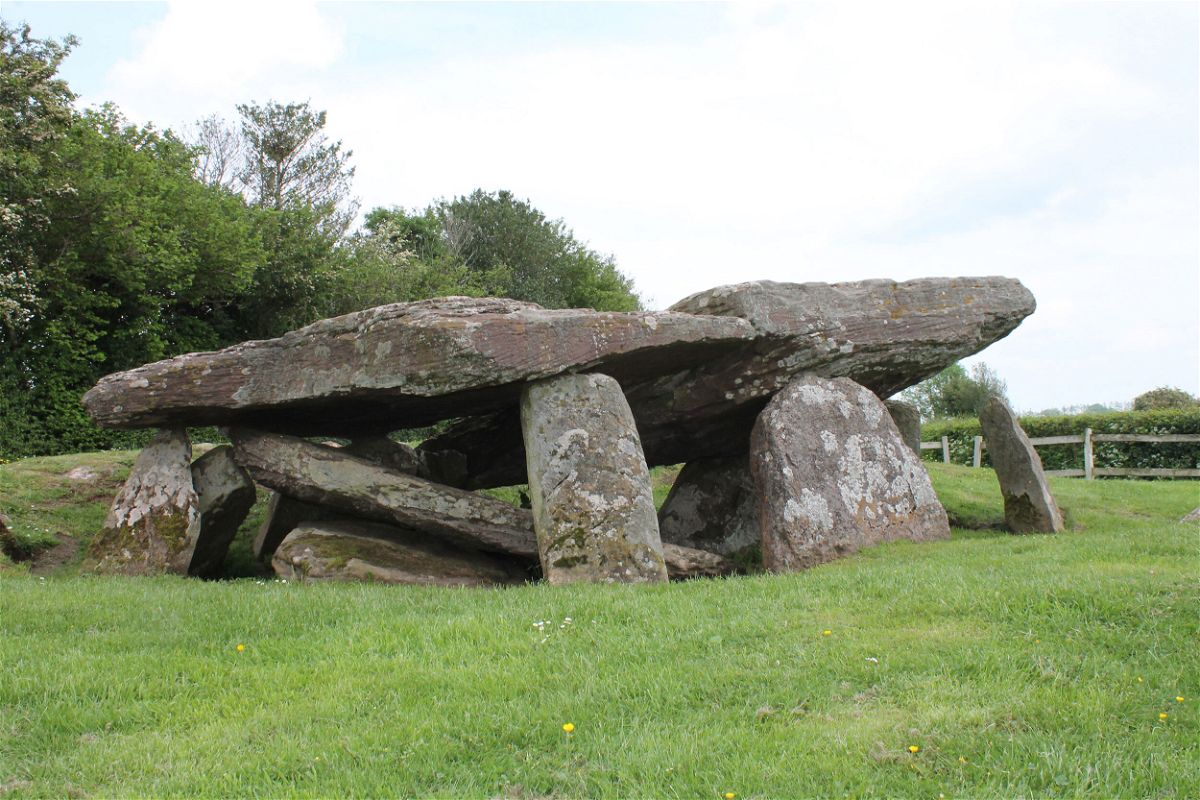A tomb linked to the legend of King Arthur is being excavated for the first time

Arthur's Stone Neolithic chambered tomb was built in modern-day Herefordshire
Megan Marples, CNN
King Arthur, the mythical ruler of Camelot, may be best known for pulling the magical sword Excalibur from a stone, but there’s another rock formation that bears his name hidden away in the English countryside.
Archaeologists are for the first time excavating a 5,000-year-old Neolithic chambered tomb that’s called Arthur’s Stone in honor of the legendary medieval king. The project is the result of a partnership between researchers at the University of Manchester in England and English Heritage, a charity that preserves hundreds of historic buildings in England.
Arthur’s Stone sits in Herefordshire in the West Midlands of England, near the Welsh border. The monument consists of a large capstone held up by a series of upright stones. Visitors can book tours to see the monument and learn more about the excavations.
The ruins are an important part of Britain’s history, but little is known about them. Excavations of the site will hopefully reveal more about the island’s ancient inhabitants, said Julian Thomas, professor of archaeology at the University of Manchester, who is a lead on the project.
It’s likely the tomb was used as a resting location for dead human bodies, which were left to decay in the chamber and then later rearranged after the flesh had rotted away and only clean bones remained, he said.
Nothing has been found in the chamber itself, and it was probably disturbed in early modern times, Thomas said.
In earlier excavations of the surrounding area, the team discovered an extended avenue of upright posts that lead south from the monument into the Golden Valley, a valley beneath the hills where the tomb is located, he said. The beginnings of the path were found last year.
Additionally, the ancient stone cairn of the monument continues unbroken along the southern side of the structure, Thomas said. A cairn — a pile of stones created by humans — surrounds the chamber where the dead were decomposed, he explained.
The legend behind Arthur’s Stone
Multiple stories that have surfaced over the years tie the legendary king of Britain to the tomb.
One of the more famous tales said King Arthur fought and slew a giant who fell backward onto the capstone of the tomb, breaking it in two, Thomas said.
Another legend suggested the indentations on the capstone are where Arthur knelt his knees in prayer, he said.
As entertaining as those myths are, there has been no documented historical association between King Arthur and the structure, Thomas said. Moreover, historians have been unable to confirm King Arthur was even a real person.
A greater historical significance
The tomb was built during a critical time in Britain’s history when plants and animals were domesticated and pottery and polished stone tools were created, Thomas said. Large monuments also became much more common, he said, and other sites such as Stonehenge were erected.
This is also the period when people from continental Europe traveled into Britain, so the construction of monuments such as Arthur’s Stone would have been a part of the creation of new social groups and traditions, Thomas said.
“The act of constructing such a massive edifice would undoubtedly have been important, as it would have drawn people together to labour, enhancing social solidarity, and perhaps generating prestige for the person or persons directing the work,” he said in an email.
While the tomb was only likely used for a couple of generations, it would have been an imposing site and a place of historical significance to successive generations, Thomas added.
The-CNN-Wire
™ & © 2022 Cable News Network, Inc., a WarnerMedia Company. All rights reserved.
Top image: Archaeologists began excavating Arthur’s Stone in England in the hopes of learning more about the Neolithic structure. (Adam Stanford/Aerial-Cam/University of Cambridge)
